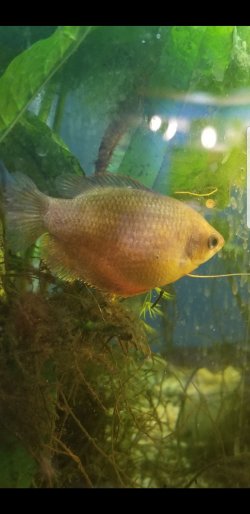DO NOT use aquarium salt to treat dropsy.
To treat dropsy you need epsom salt dips.
How to prepare (any) dip for your fish:
Prepping for the dip is the same for either salt type. You will need:
- a clean fish-only 1 gallon container
- a smaller container
- Water conditioner
- a measuring spoon
- thermometer
- net
- your undivided attention!
- watch/timer/alarm
- salt per your needs
Here's what you need to do:
- Fill your gallon container very fully with clean, treated water. Make sure the water is the same temperature as the water the fish came from in its tank via the thermometer. This prevents temperature shock.
- Add the salt per recommendation and stir it until it is fully dissolved.
- Get a second container with 1/4 salted water like your 1 gallon tank, and the rest (3/4) with tank water (this is the "reviving station").
- Carefully get your fish from its home and gently put it into the water. You must make sure that the fish does not pass out! You can tell if a fish has conked out if it is no longer breathing (look at its gills, by the eyes) or if it lists to the side and becomes still. It may knock out due to the sudden change in salinity (saltiness) of the water, but can be revived.
- *If the fish passes out or becomes extremely stressed, remove it! Carefully but hastily put the fish into your reviving station to revive. Then, put it into its home again and try the dip another time.
- If the fish is not super stressed and does not pass out, be very attentive during the recommended time in the dip as the fish may jump due to discomfort or stress. Pay close attention to how long the fish has been in the dip and do not exceed the time!
- Once the fish is finished, put it into the reviving station to adjust back to more normal water parameters. Then, without pouring the salty water into your










